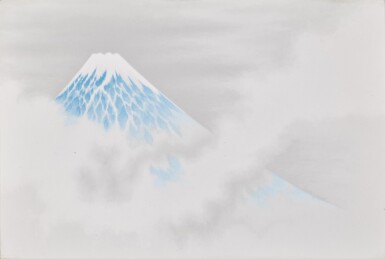Fine Japanese Art
Fine Japanese Art

THE PROPERTY OF AN ENGLISH GENTLEMAN
A CLOISONNÉ PANEL, MEIJI PERIOD, LATE 19TH CENTURY
Auction Closed
November 3, 04:10 PM GMT
Estimate
40,000 - 60,000 GBP
Lot Details
Description
THE PROPERTY OF AN ENGLISH GENTLEMAN
A CLOISONNÉ PANEL
MEIJI PERIOD, LATE 19TH CENTURY
the fine rectangular cloisonné panel worked in wireless enamel depicting Mount Fuji
44.5 cm x 60.5 cm, 17 ½ (h) x 23 ⅞ (l) in. (framed)
The bluish snow-capped summit of Mount Fuji, set against a grey sky, emerges from enveloping clouds. This beautiful and serene image resembles a smooth painting, but is in fact an example of musen, the wireless enameling technique first developed by Namikawa Sosuke, along with the shosen technique in which some wire was used. In 1881, Sosuke exhibited a set of musen and shosen panels, their designs influenced by traditional Japanese paintings, at the Second National Industrial Exposition in Tokyo and it is significant that these were featured in the Art section, rather than alongside other cloisonné enamelware in the Industrial section. Other examples of depictions of Mount Fuji can be found in Sosuke’s oeuvre, including a kidney-shaped tray in the Khalili collection (No. 102) and a large plaque dated 1893 at the Tokyo National Museum (G-603), exhibited at the World’s Columbian Exposition in Chicago that year and illustrated in a booklet by Sosuke in 1896, to which this panel is very much akin. A very similar version of this lot, also without wires but with a slightly deeper blue enamel, can be found in the Khalili collection. Oliver Impey and Malcolm Fairley have attributed the Khalili panel to Ando Jubei, arguing that Sosuke preferred to work in shosen, while Ando Jubei was a keen advocate of musen, and have suggested a production date of somewhere between 1900 and 1910.
For a similar panel in the Khalili Collection see https://www.khalilicollections.org/all-collections/accession-print/?post_id=42
